Whether your pool is cloudy or full of contaminants, there comes a time when every pool owner needs to shock their pool. However, is there such a thing as too much shock in the pool? Can you “over shock” your pool?
In short, pool shock is simply a concentrated form of chlorine. Shocking your pool, or super chlorination is simply adding enough chlorine to destroy the buildup of chloramines. So, adding too much of it can’t be good… right? Have you ever put too much shock in your pool? If so, what did you do?
And how much is too much?
What Is Shock?
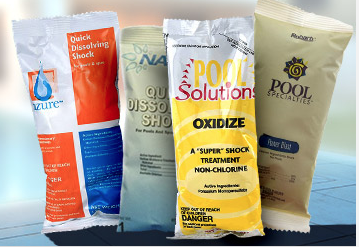 As pool owners, the things that bind us together are the issues we encounter as we balance and maintain our pools. One of those things is shocking your pool. At some point, even the pools that are the most in tune will need a good shocking.
As pool owners, the things that bind us together are the issues we encounter as we balance and maintain our pools. One of those things is shocking your pool. At some point, even the pools that are the most in tune will need a good shocking.
The point of shocking your pool is to get rid of all of the dirt, chloramines, and bacteria in your pool by introducing a large amount of concentrated chlorine to your water at once.
When shocking your pool, you are adding so much Free Chlorine that it breaks the molecular bonds of the chloramines. You want to reach this breaking point every time you shock your pool to prevent algae from building up. Failing to hit the breaking point can potentially cause more chloramines.
There are several different kinds of pool shock. They have different chemical compositions and purposes. For more information, you can review our article on the differences between pool shocks.
But, how does one add too much shock?

Before Shocking Your Pool
 Normally, shocking your pool can temporarily cloud your pool. If you do not give your pool water enough time to breathe between treatments, you are compiling all of the cloudiness at once. At this rate, you won’t see any improvements.
Normally, shocking your pool can temporarily cloud your pool. If you do not give your pool water enough time to breathe between treatments, you are compiling all of the cloudiness at once. At this rate, you won’t see any improvements.
Still, before adding shock or chlorine, we recommend that you test your pool water first. If you are responsible for maintaining your own pool it’s a good idea to keep a good test kit on hand. This helps you to avoid having to run up to your local pool store for a test. First, test your Free Chlorine and Total Chlorine levels to determine how much Combined Chlorine you have. Your Combined Chlorine tells you how much shock you need to add.
Although most manufacturers include instructions for shock treatment, charts, and/or steps to help you calculate how much shock you need, if you still prefer to calculate it yourself, we have included the steps below.
How Much Shock Do I Need?
- To find your Combined Chlorine (CC), subtract your Free Chlorine (FC) from your Total Chlorine (TC).
- Multiply your CC by 10.
- Subtract your FC from that sum.
- Using the information on the package, determine the amount of shock that produces 1 ppm chemical change in 10,000 gallons of water
- Divide your pool volume by 10,000. Note this number.
- Next, multiply the chemical change ( step 4) by the divided pool volume (step 5) and the CC/FC difference (step 3).
- Convert the answer into pounds by dividing it by 16. This answer tells you how much pool shock you need to add.
A good rule to remember is to use one bag of shock (1 gallon of liquid chlorine) per 10,000 gallons.
Too Much Shock?
Now, let’s assume you’re like me and suck at math. There might come a time when you “over-shock” your pool. Adding more shock and more shock to your pool won’t speed up the process. In reality, it does the exact opposite.
Another mistake that goes hand in hand is measuring your chlorine levels too soon after you have shocked the pool. The high chlorine levels actually “bleach” the test strip, giving you a false reading. In fact, most manufacturers do not design their test strips to withstand extremely high levels of chlorine. If you have just shocked your pool and you measure your chlorine levels, it may appear like you have no chlorine at all. As a result, pool owners continue to add more shock. It’s a good idea to give your pool time to oxidize. So, wait a few days before testing your water.
If you put too much shock in the pool, simply wait it out. If you have a cover on your pool, take it off. The more sun that hits your water, the faster it will dissipate. Technically, if your free chlorine levels are holding up swimming UP TO your shock level, depending on your CYA, is safe. Keep in mind, no one should swim in a cloudy pool, even if your free chlorine levels are holding. If the water clarity prevents you from seeing the bottom of the pool, we recommend you do not return to the pool.
In short, test your water a few days after you have shocked your pool to determine exactly how high your free chlorine levels are. Don’t forget to review the instructions on the back of your shock. Most companies provide the levels that they recommend to be safe for swimmers to return to the pool.
Feel free to check out our other blog post How Long After I Shock My Pool Can I Swim?

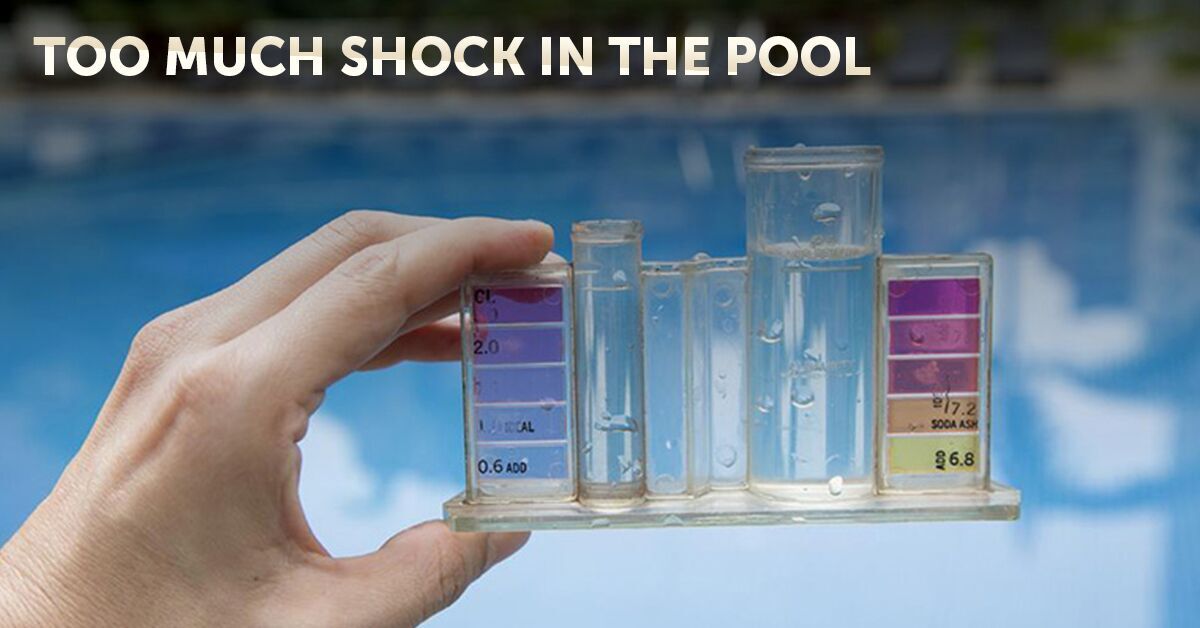
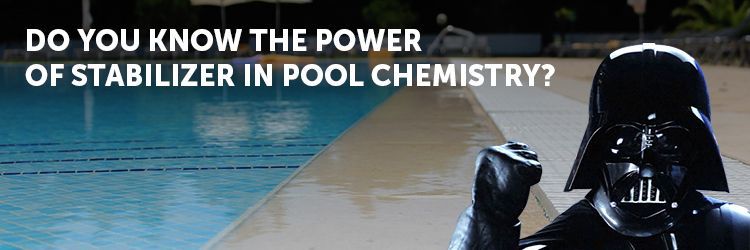
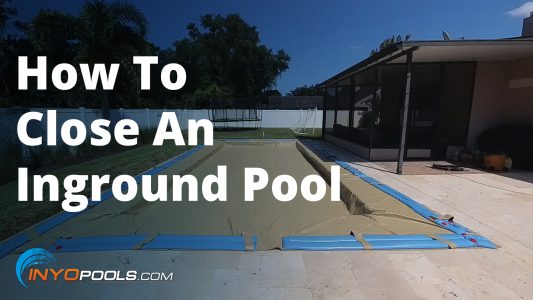
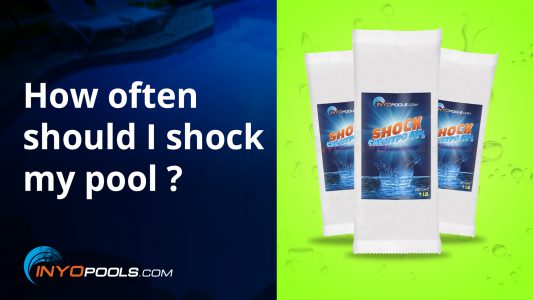
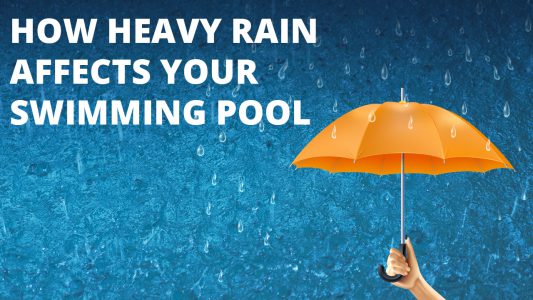






Please keep in mind that the copper in well water can react to the pool chemicals and turn your pool green.
Stacey is correct, pool shock added to a pool that is oversaturated with metals like copper or iron stains. For more info on bad chemicals reactions give this article a read: Bad Pool Chemical Combinations
Our pool was green and my daughter put in 2 shock treatments. We waited over 24 hours and pool was still green. We added another, waited and then added another so 4 treatments in 3 days. The pool is now cloudy. What do we need to do to fix this problem?
If the pool is milky or cloudy, that is likely dead algae that need to be filtered and purged. your can either use a clarifier or a flocculant to clean up the dead algae. Or you can do the more labor-intensive method of filtering then backwashing/cleaning cartridges and repeat.
We go into more depth on the process of clearing up your pool on this article and video: How to Clean a Green Pool?
You should have the water tested so you can see where your water quality is at; it’s fundamental in adding the correct product. What kind of shock did you add?
One thing that helped me get the green out was using a bottle of algaecide and shock a few hours apart.
But you really need to know the water quality results before you add anything else.
I’m a first time pool owner. I have a bestway 16x10x42 vinyl steel pool. It’s 2893 gallon pool. My water is cloudy and resulted today in too high of chlorine and ph level . I don’t understand why but I’m thinking I don’t know how much of the treatment to I need to put in. Can you give me the shock measurements and how much chlorine tablets I should put in the pool? I’m clueless but want to understand the chemicals ratio.
Pool shock is usually 1 pound for every 10,000 gallons. how much regular chlorine and pH balancer is needed is dependent on what your levels are at that time.
I suggest using this pool chemical calculator to determine how much of each chemical you need at any given time. You need to know the size of your pool in gallons, and to enter the most recent water chemistry results.
https://www.troublefreepool.com/calc.html
I’ve waited 2 weeks since shock g and its still cloudy and chlorine is still too high. What do I do?
Have you tried backwashing and then adding fresh hose water?
My first concern is, why is it cloudy? Is it cloudy because of dead algae or is the water chemistry imbalanced? how much shock did you put in for it to maintain a high chlorine level for two weeks? Are you also using tablets or liquid chlorine? If so, I would cut down on that to let the chlorine levels come down
What are your actual Free Chlorine, Combined Chlorine, and Total Chlorine numbers? Unless your pool is covered, or you put a ton of shock in there, the levels should not be that high after two weeks. There are a few reasons why it could be cloudy: High pH+ Low Chlorine, Low Chlorine + Low Stabilizer (CYA), High pH + High Calcium.
If the cloudiness is due to dead algae, use a clarifier or flocculant.
New pool (small 1000 gallons)I added 5 times the amount I was suppose to .. water is green … this is the only thing I have added to pool .. is itfixable?
If you have not balanced your water chemistry, that chlorine may not do very much. Have you had your water tested? That will be the first step in figuring out what needs to be leveled out. For a more thorough explanation on what chemistry, give this article a read How to Balance Your Pool Water.
It is fixable but we have to start from square one to make sure everything is right.
I know this late but this is more for anyone else looking this up. I’m not sure a 1000 gallon pool is worth paying money for chemicals to maintain. I understand your water rates may be more than mine here in Iowa (not even $5) but it so much harder to try and balance such a small amount due to zero room for error. Most likely the best option is to dump and refill.
I added 5 bags of shock it to my pool because it was turning green now it is cloudy what do I need to do How can I get the ph right in it.not sure if it is too alkalinity or too acidy.help please
We have this guide is called “How to Clean a Green Pool” and it shows you how to clear up the murky mess you are dealing with. A chart for the proper ranges of your water chemistry is also listed. The cloudiness you see could be dead algae or a mix of chemicals. if you are looking the balance your water chemistry, I suggest going here, Pool Balancers. The names pretty much explain hat they do, pH Increaser, pH Decreaser, and so on.
Are you relatively new to pools? Is this your first season with a pool?
I live in Florida the rains every day and humidity is always making my pool cloudy how dark the cloudiness or haziness
We are in Florida, so we know the conditions you would be dealing with, but this issue is simple. If heat and humidity are making your pool hazy then something is unbalanced in the water chemistry. Your chlorine is too low, or something is just off.
What are the results of your water chemistry results?
How do I get the bubbles to stop forming after adding too much shock
Thank you so much for the info on too much shock. My mother-in-law is so impatient and of course added two treatments of shock in the same day in only a 8,000gallon pool and was ready to dump some liquid chlorine to help the cloudy go away! But I got to your site first and now we are waiting it out ! Thanx for the info about Too Much Shock in Your Pool!
You’re welcome. Sounds like your MIL needs to lose her pool chemicals privileges. 😉
What the results of your latest water test? There is likely something else going on here. Also, is your pool green, or turning it?
Thank you so much for this article! We’ve been struggling with our cloudy pool and I’ve definitely over shocked it. Now I know why we’re not getting the desired results 😬. I’ll be patient and wait a few days to test it again.
Thank you for the kind words; I hope it worked out for you!
Our 28by 9 above ground pool after it was filled someone put a 4 lb box of a Pool kit called HTH pool care for up to 20:000 gal into our pool. What should we do to correct this problem?
I don’t know what is in a 4-pound box of HTH pool care. But generally, the first step after someone asks, “What should I do now after I put X,Y, or Z in my pool??” should be to test your water. The water’s test results should tell you what needs to be done to balance it.